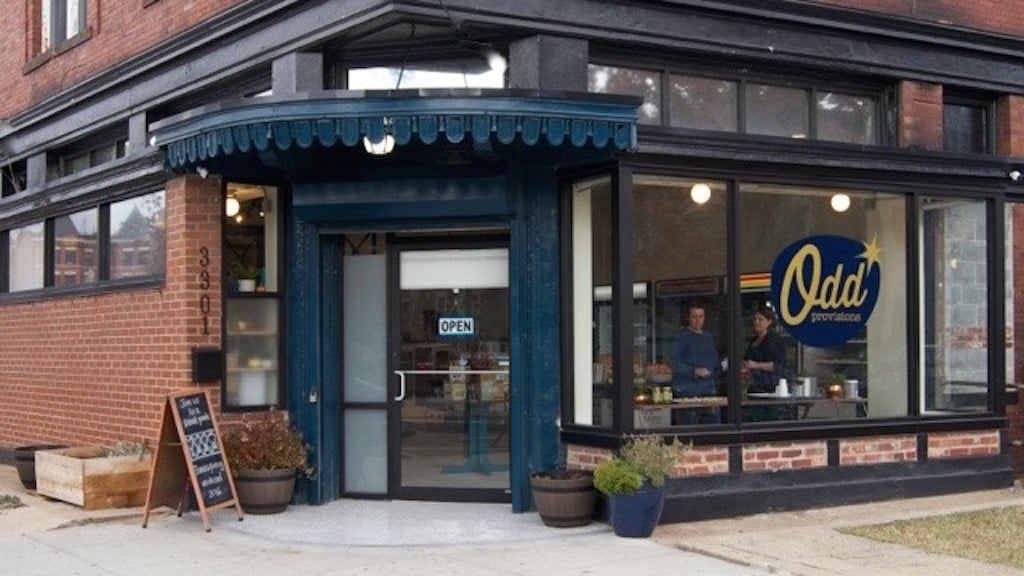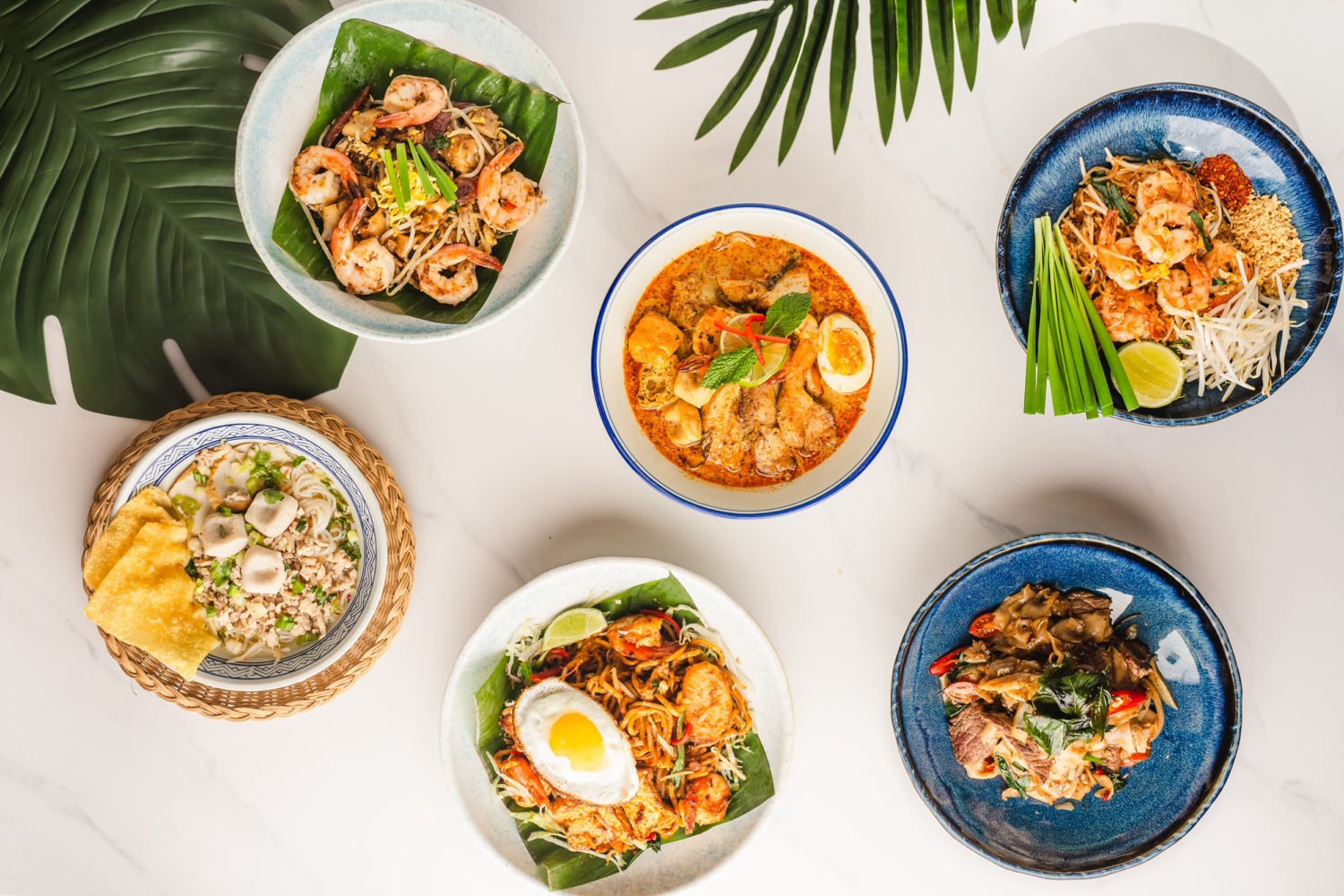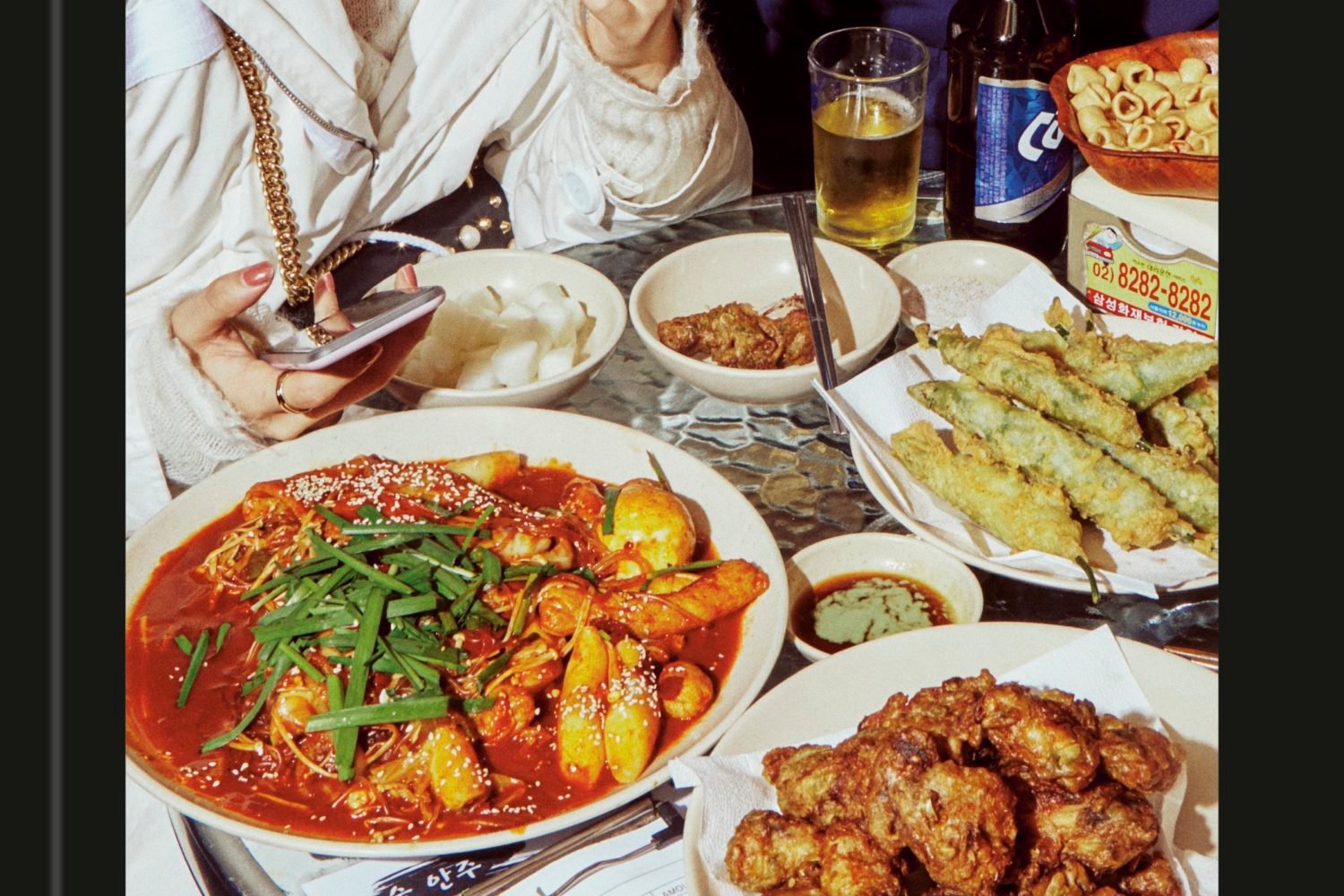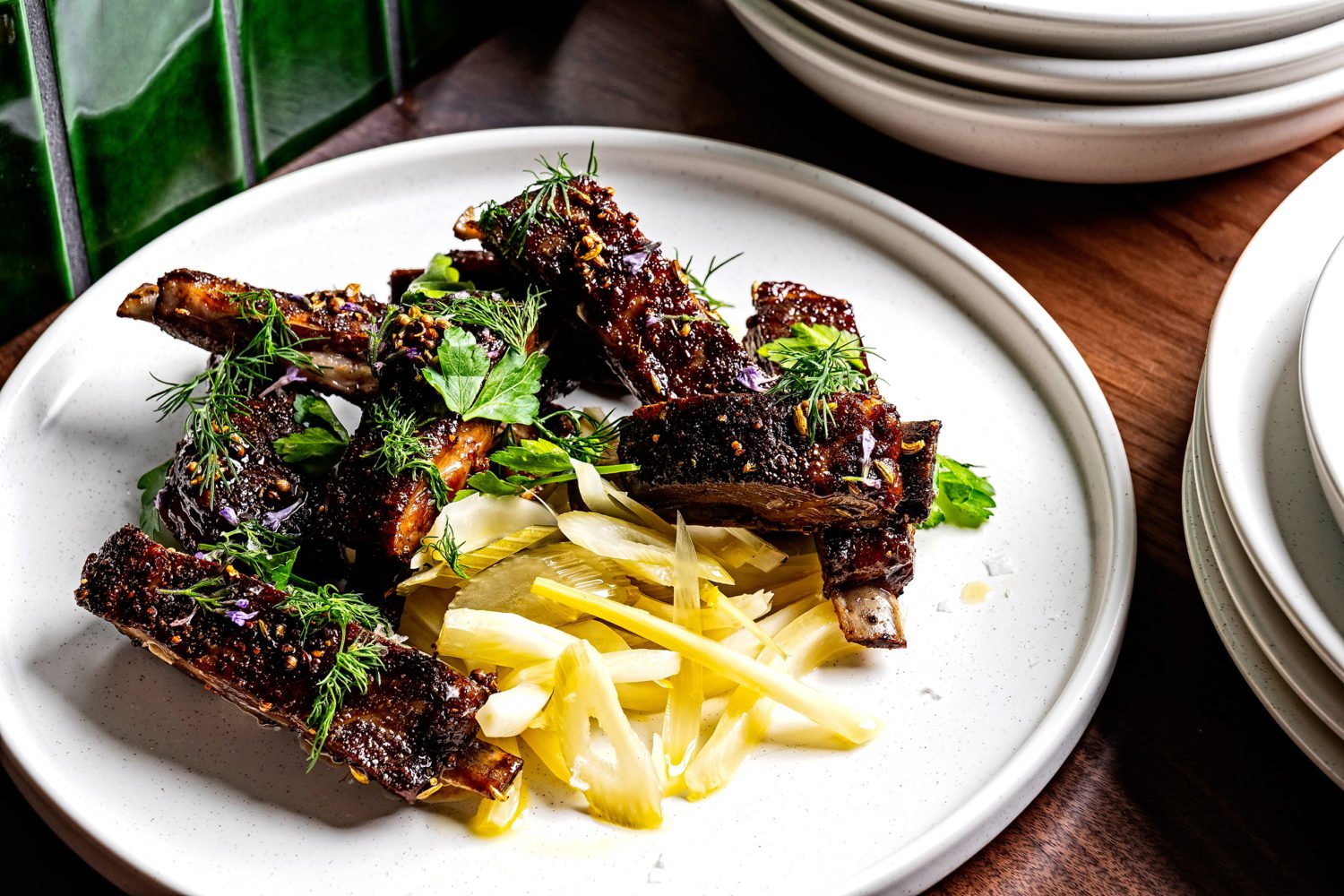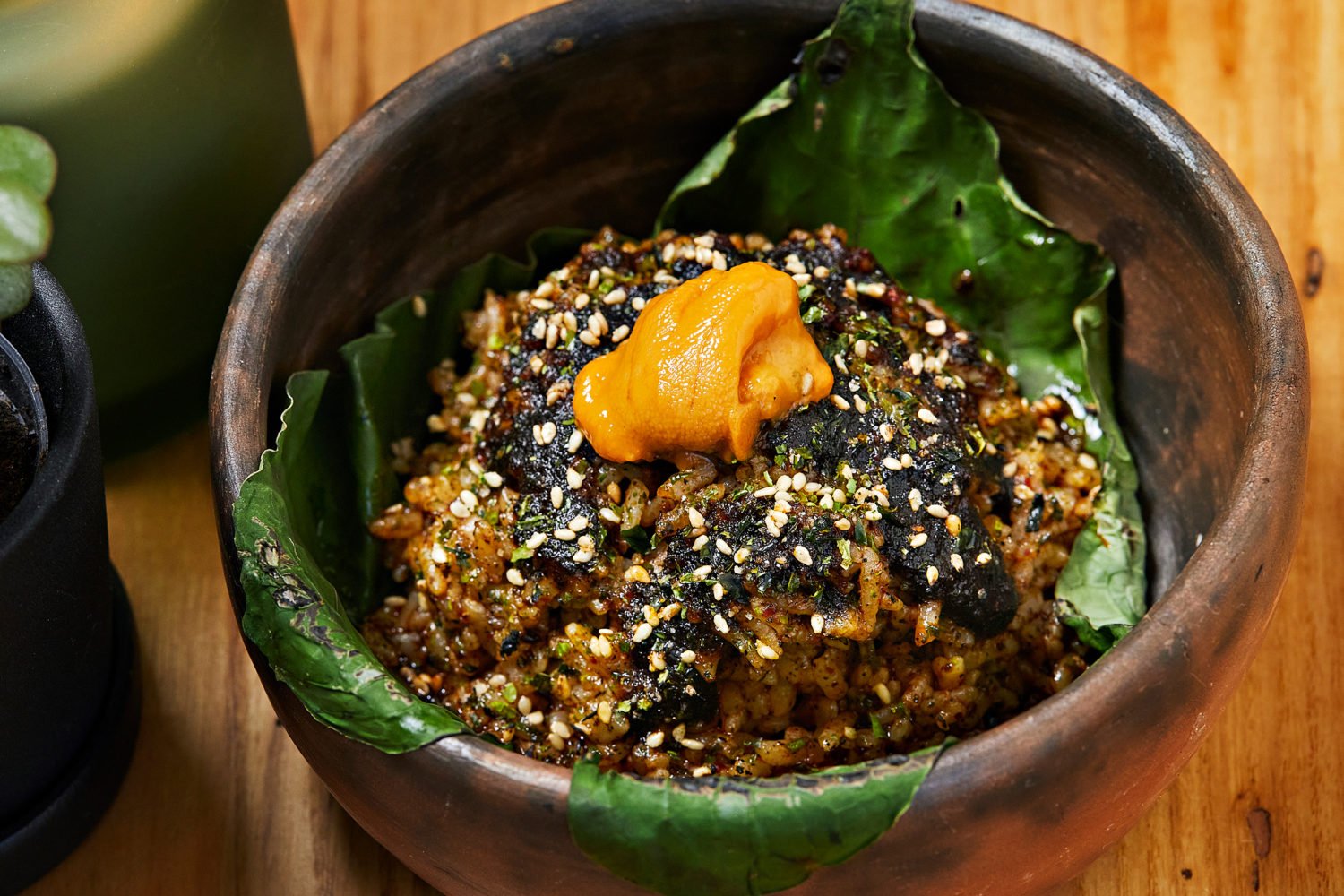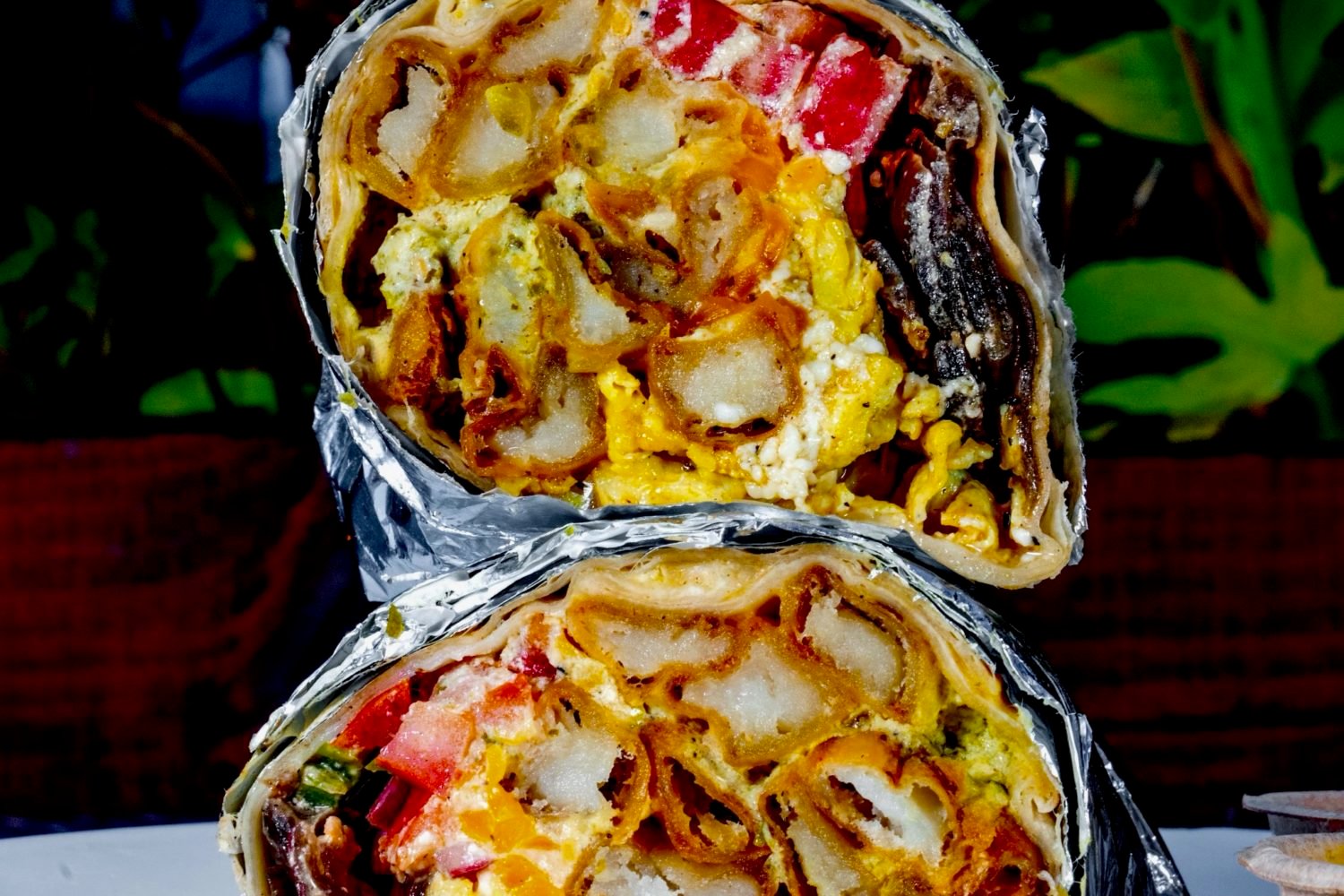
I had just finished making the case for eating at Mio to my sister-in-law, a sometimes reluctant fine-dining partner, when we walked into the near-empty restaurant for lunch. I had told her about Stefano Frigerio, who hails from Como in northern Italy and comes to Mio by way of Maestro, the four-star Italian restaurant where he served as sous chef under Fabio Trabocchi. I had told her about my first dinner, which included a beef carpaccio with quail egg and a Parmesan soup with expertly fashioned gnocchi.
“Sounds great,” she said as we gave our fake name and claimed our reservation. “You know I love Italian.”
The hostess, eavesdropping, offered a terse correction: “We’re not Italian.”
Uh-oh, said the look on my sister-in-law’s face. As soon as we were in our seats, she glanced around the dining room, a slick space that resembles a cocktail lounge impersonating a wine cellar. I could tell she was bracing herself for yet another trendy fusion restaurant that thought too much of itself—yet didn’t seem to know what it was.
Frigerio, I didn’t tell her, is the restaurant’s third chef in a year. The founding chef, John Paul Damato, who was recruited from Jaleo, exited a couple of weeks into the job. Owner Manuel Iguina, the former manager at Café Atlántico, had conceived Mio as a tapas restaurant, and even with Frigerio aboard he seems unwilling to let go of his blueprint. The staff, when it isn’t correcting its customers, sometimes describes the restaurant as Mediterranean, a way of splitting the difference between Spain and Italy.
But how then to account for the Latin-leaning cocktail list with its margaritas, pisco sours, and caipirinhas? Or the dessert list, on which, during the first of my several visits, a Key-lime pie consorted with profiteroles, a banana split with pot de crème?
Frigerio is a promising talent, but like his mentor Trabocchi—who makes the case for simplicity with a perfect peasant’s ravioli, then bids you pour a foaming sauce from a test tube atop your entrée—he resists easy classification.
My sister-in-law wasn’t the only one baffled by Mio. “How can a fish have a chop?” a friend asked our waiter one night about a “duo of hamachi”—a small mound of yellowtail tartare and a tiny bone-in piece of yellowtail—that wouldn’t have been out of place in a chic pan-Asian restaurant. The waiter launched into a lengthy soliloquy about the fish, the technique, and the chef’s philosophy.
Not wanting to risk another explication, my friend declined to ask about the cup of lemon sorbet that sat alongside the tartare and the chop. Was it a palate cleanser between the tartare and the “chop”? He never did get around to asking about another dish’s “foam,” a blandishment that appears almost as often here as a “sauce.”
Frigerio doesn’t just want to cook good food; he wants to create dishes that dislodge expectations and demand a diner’s attention. Sometimes, as with the hamachi, he gets cute; sometimes he reveals a weakness for odd flourishes, such as edible flowers in a dish that hardly needs embellishment. And he would do well to remember that Mio is not Maestro, that he’s no longer turning out elaborate tasting menus in which each course is judiciously—some might say preciously—portioned. I’m not one to say that size matters, but a plate of venison with four slices of meat on it? Come on.
More often than not, what he reaches for he grasps. The Parmesan soup is remarkable for what it’s not: It’s not heavy, it’s not creamy, it’s not even cheesy—it’s capped, cappuccino style, with a froth that smells and tastes as strong as a block of Parmesan but disappears like cotton candy; a handful of elegant gnocchi bobs in the liquid. Gnocchi headline another preparation, a small bowl of soft dumplings that serve as canvas for a rich goat ragoût and a juicy goat chop.
Frigerio repeated the trick one night with a cardoon soup. The earthy, seaweed-green liquid was less broth than sauce for a handful of ravioli stuffed with rabbit and a few juicy rabbit chops, the tiny bones as clean and smooth as toothpicks.
No less earthy, and just as masterly, is the lamb loin with lamb chop, the meats flanked by a small sheet of the lamb’s crisped fat cap—as though to assert a rusticity that the kitchen’s refined technique has almost paved over.
These dishes recall the glories of the Maestro kitchen, a place that could make the peasanty seem elegant and vice versa. What makes Frigerio interesting, and Mio rewarding, is that he seems to understand that the best way to pay homage to Maestro is to treat Italy as an approach rather than a destination.
Swordfish not only turned up on his menu at lunch one day—it’s since been replaced by escolar—but turned up rare. When has it ever been left pink in the center? And when has it ever been crusted with salt? As with the cardoon soup, its lightly sweet carrot-lemongrass purée was more sauce than veggie.
A dish I tried early on, veal sweetbreads with toasted hazelnuts and curled leaves of fried Jerusalem artichoke—it looks like an artist’s still life, a study in autumnal brown—probably takes France as its inspiration, not Italy. The ballotine of foie gras is definitely French—and sinfully rich. Forget the edible flowers—forget even the sweet-corn toast—and focus on the intensity and creaminess of the foie gras, which needs only its modest accent of coarse salt and a quick swipe through its drizzle of sweet sauce. (Strawberry-rhubarb has replaced huckleberry as the fruit of choice.)
The wine-braised beef cheeks served on potato purée are classic bistro fare, but they taste like Americana. They could make a Yankee pot roast jealous. Meanwhile, the fried catfish at lunch, served with a mound of vinegared slaw, would put a Southern roadhouse to shame.
The kitchen’s eclecticism didn’t always endear the place to my tablemates, and I suspect it doesn’t make things easy for the staff, which one minute is the epitome of formality, the next warm and chatty. You can count on your table’s being swept free of crumbs before dessert; you might also go for long stretches without being able to summon your server. Management has instructed staff to set down each diner’s plate for each course at the very same time—the kind of touch that Michelin-striving restaurants adopt. But sometimes the plates end up in front of the wrong diner. Or never turn up at all.
I never did get the mascarpone nougat I ordered. But I did luxuriate in a supremely smooth pot de crème, a chocolate sorbet with the intensity of a chocolate extract, and an unorthodox Key-lime pie nearly as fluffy as one of Frigerio’s foams.
Like much of what precedes it, these desserts leave you floating, not bloated. Also, like much of what precedes it, what at first seems scattershot—a collection of dishes—begins to look purposeful and coherent: a virtuoso display of his mastery of soft, creamy textures.
The hostess and staff, the patrons, even Frigerio might not always know what Mio is supposed to be. Sometimes, though, the most rewarding restaurant isn’t the established force, the known quantity. It’s the restaurant in the throes of revolution, just beginning to figure out what it wants to be.







